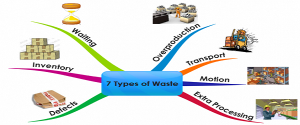
All companies communicate with their partners using three basic building blocks. They Exchange, Integrate and/or Collaborate Exchange is the realm of the EDI providers or the early EAI (Enterprise Application Integration) providers. It is the simplest method that moves data from and too companies. There is no implied or explicit intelligence in the data – it is as simple as a buyer sending a static view of a range of Purchase Orders to a supplier.
Once it was paper-based, then it became EDI based, and now it is XML based. The technology available to do this is generally available today. Integration was the main focus for many companies until recently. This is also where the EAI vendors exceed their promise in that they do not get to the next stage. Integration is has implicit and explicit connotations. Integration explicitly ensures that buyer and seller computer systems are tied together. As the buyer sends POS or demand data to the seller, the seller will automatically create a shipment in order to fulfill the buyer’s needs.
This was a single-directional flow of information. There was no collaboration. It was a series of discrete, one-way flows of information that was used “as is” unless it did not get processed by the systems in place. The implicit assumption was that the buyer-seller business processes were synchronized. And this was the failing of most standard Integration processes such as Vendor Managed Inventory (VMI) and Quick Response (QR). Systems integrationwas achieved but business integration was not.
Collaboration is the key. This is where the two companies completely change the transaction and hence the relationship between each other. True collaboration is defined as:
1.Both companies jointly derive the information needed (forecasts, plan, order etc.)
2.Both companies have approval of the information
3.Both companies use the resultant planning information to execute to
4.Both companies measure each others performance to the plan
5.Both companies pay themselves based on that performance
There are several cases of where steps 1, 2, and even 3 are achieved but few examples of companies achieving the entire scope. This is a bi-directional model where iterative and flexible business processes are integrated in order to support a mutual strategy.






